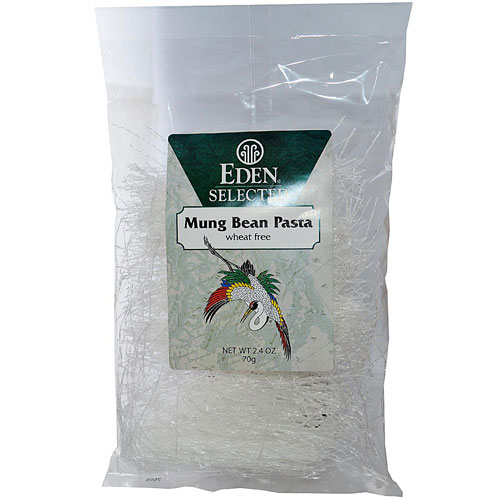Elbow. Penne. Linguine. Fettuccine. Fusilli. Spaghetti. For some people (like myself), pasta can be its own food group. I eat pasta at least once a week, and to stay interested in the meals, I rotate the kinds of pasta that I cook. It’s a blank canvas that you can color with bold sauces; pair with sautéed vegetables or roasted meat; and cover in your favorite cheeses.
But sometimes the typical flavors of pasta can be underwhelming. In the gluten-free world, brown rice and corn-based pasta are the most common. Brown rice pasta is infamous for being easy to over-cook, rendering the individual noodles a pale beige blob of unappealing food. But, if you can master the temperature and timing, it’s a soft and squishy alternative. Corn is more substantial and similar in texture to wheat pasta.
Changing up the starches on your plate can pack some hidden nutritional benefits (and, depending on which of these you decide to try, can add some extra color as well).
Cooking tips
The cooking time for these pastas will vary greatly, so it’s important to keep a vigilant watch on the boiling water. For example, chickpea pasta produces a foam while cooking that needs to be watched closely, or else it’ll overflow onto the stove. The cooking time is also dependent on your texture preferences. The beloved al dente texture comes from pasta that’s undercooked just enough to retain a bite. For parents with smaller children, cooking the pasta past its typical doneness, until it’s soft yet not too mushy, may do the job. Regardless of your preferences, frequently taste-test noodles to gauge how much remaining time your pasta has in its bubbling pool of salted water.
1. Chickpea pasta
Among the alternative pasta options, chickpea seems to have risen the fastest and loudest. Chickpeas are an excellent source of protein, especially for individuals who don’t eat meat, and also help support blood sugar levels.† They have a mild flavor, so you can pair this pasta with a variety of sauces without worrying about a flavor competition.
Make it! Chickpea Pesto Pasta with Veggies
2. Lentil pasta
Lentil-based pasta might be the runner up for most popular alternative. For parents with picky eaters, add lentil pasta to the menu. The bright colors of the red and green lentils make for a fun meal (and is an easy way to hide vegetables among the noodles). These legumes are low in calories yet high in protein; more than 25 percent of their calories are from protein.
Make it! Veggie & Lentil Pasta Stir Fry
3. Black bean pasta
If you’re trying to make a visual statement for dinner, serve this jet-black pasta and wow your guests. Much like the other variations on this list, black bean pasta is packed with protein. It’s also quite dense in fiber. Another interesting, and perhaps unknown, fact about these dark legumes: they support healthy bones due to the presence of iron, phosphorus, calcium, magnesium, manganese, copper and zinc—all wonderful minerals for a healthy body.†
Make it! Vegan Black Bean Noodle Bowl
4. Quinoa pasta
Did you know that quinoa is a complete protein? This means that these little pearls contain all the essential amino acids, making quinoa a stable food in the diets of vegetarians and vegans. (If you eat meat, quinoa is still a great addition!) Typically a light brown color, quinoa is a whole grain super fiber food (with almost twice that of other grains). However, it’s important to note that, like the more obscure pasta options on this list, quinoa pasta may have a more pronounced flavor than some palates are used to. Try a box and do a test meal, but don’t be too surprised when you go back for more!
Make it! Quinoa Pasta Mac and Cheese
5. Shirataki noodles
On the other end of the flavor spectrum are “miracle noodles.” They’re tasteless and made from a type of fiber grown from the konjac plant, a native of Japan, China and Southeast Asia. These noodles are probably unlike anything you’ve seen before. They’re made of 97 percent water, 3 percent fiber and 0 percent carbs. Much like their Japanese namesake (which is “white waterfall”), these noodles are translucent. They’re a great option for people monitoring their carb intake or individuals who want to try something a bit out of the ordinary realm of noodles. What’s so great about this option is the entirely blank flavor foundation. Bring on the sauces!
Make it! “Cheesy” Shirataki Noodles with Shiitake and Kale
6. Mung bean pasta
Mung bean pasta is another obscure option on the list, but it’s worth trying. If you’re skeptical about trying straight-up mung, you can also opt for combo pastas, like Explore Cuisine’s organic edamame and mung bean fettucine, which contains both edamame and mung bean, which is actually considered a legume. Because of the combination of protein-heavy ingredients, it has over 20 grams of protein per serving. Mung bean pastas are high in fiber and low in glycemic index. They have a funky look too, with bumps and rivets, which traps sauce, cheese and other toppings.
Make it! Vegan Edamame Pasta with Roasted Cauliflower Alfredo
These are the store-bought pastas to try, but in the kitchen, you can also experiment and make your own! Of course, there’s the traditional flour-and-egg dough route, but you can also slice zucchini into thin ribbons for a healthy, veggie-filled dish—such as raw zucchini pesto “pasta”–or get a spaghetti squash and roast it so the center shreds apart with the gentle nudging of a fork and produces angel-hair-like noodles.
So whether you decide to turn a vegetable into a noodle or try one of these other gluten-free pasta alternatives, you’re bound to create a meal that’s colorful, probably protein-packed and pleasing to your palate.










